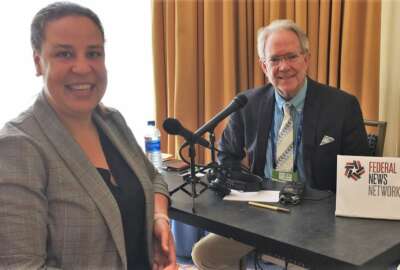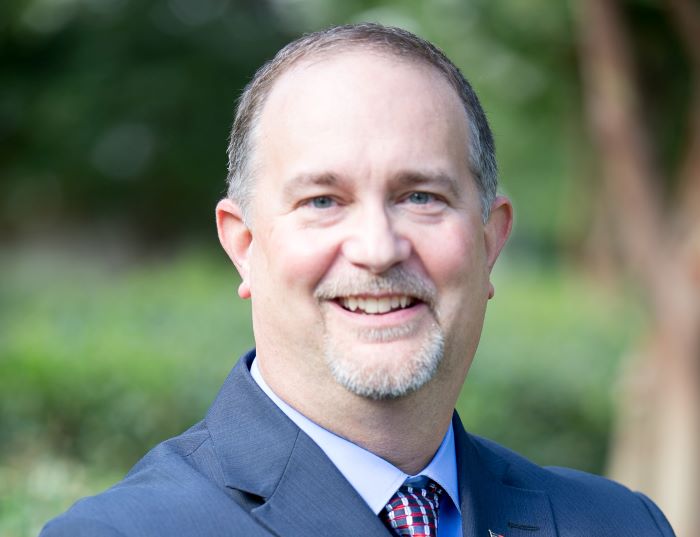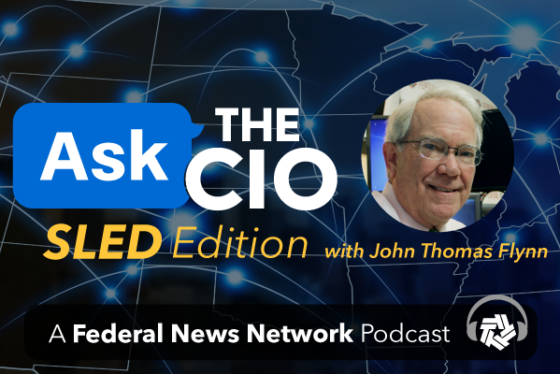
North Carolina CIO elected NASCIO president on org’s 50th anniversary
NASCIO celebrated 50th anniversary in Nashville with record attendance, revealed annual CIO survey results and elected a new president from North Carolina.
The National Association of State Chief Information Officers (NASCIO) celebrated its 50th anniversary recently at its fall conference in Nashville, TN. Federal News Network’s Ask the CIO: SLED Edition was on the scene for the festivities, and I was honored to mark the occasion of my quarter century association with NASCIO, interviewing a number of state CIOs and NASCIO officials which I will discuss in a series of broadcasts and articles.
![]() While NASCIO was celebrating its golden anniversary, Doug Robinson was commemorating his 16th year as the organization’s executive director, a steady hand at the helm of an organization both he and I revere. Having missed just a handful of conferences since my first that I hosted in Boston in 1994, it has been fascinating to watch how the organization, its membership and its priorities have evolved. The Boston event attracted just over 100 participants while Nashville in 2019 had attendance pushing 900, with 50 state and territorial CIOs represented. And that kind of popularity didn’t just happen by accident — Robinson and his NASCIO staff always put the work in.
While NASCIO was celebrating its golden anniversary, Doug Robinson was commemorating his 16th year as the organization’s executive director, a steady hand at the helm of an organization both he and I revere. Having missed just a handful of conferences since my first that I hosted in Boston in 1994, it has been fascinating to watch how the organization, its membership and its priorities have evolved. The Boston event attracted just over 100 participants while Nashville in 2019 had attendance pushing 900, with 50 state and territorial CIOs represented. And that kind of popularity didn’t just happen by accident — Robinson and his NASCIO staff always put the work in.
Related Stories

NASCIO members still focused on security in latest annual survey
As usual a highlight of the conference is the annual survey NASCIO sponsors, and 2019 was no exception. Robinson revealed the latest findings.
“In this 2019 survey, we asked about the most impactful emerging technology and the answers were artificial intelligence, robotic process automation and machine learning. That stack came in at number one, with 65% of the CIOs reporting that they believe that’s going to be the most impactful emerging technology that they’re going to be dealing with,” he said.
Round-robin CIO speed networking a hit
A relatively new feature at recent conferences has been the introduction of the speed networking sessions, even more attractive to the corporate attendees as their ranks have swollen at these events over the years.
“We started several years ago providing an opportunity for each CIO to essentially host a table. We invite all of our corporate members, the suppliers and the community to visit that table in a round-robin fashion,” Robinson said. In this way they get to meet and hear directly from the state CIO. “And so it really helps. We do that purposely at the start of the conference. So they get to actually visit the CIO face to face, and the CIOs get to articulate their top priorities and then every 20 minutes we ring the bell and they move to another state table.”
Robinson explained that due to the ever-changing state CIO ranks around the country it’s difficult for corporate members to establish critical relationships and NASCIO conferences help address this shortcoming.
“It’s challenging for the corporate community because we have such a CIO churn. We have a number of CIOs who were not even in place when we had our midyear meeting last May,” he said.
With 800 or so corporate attendees vying to meet and build relationships with the 50 or so CIOs, plus the fact that nearly one-third of the corporate attendees indicated Nashville was their first NASCIO conference according to Robinson, the speed networking sessions are a very positive development indeed.
 NC’s CIO Eric Boyette elected new NASCIO president
NC’s CIO Eric Boyette elected new NASCIO president
Each fall’s annual conference also features the traditional handing over of the gavel to the incoming NASCIO president. In this case, Delaware CIO James Collins welcomed his newly elected successor, North Carolina CIO Eric Boyette, who joined us to discuss the conference and his new responsibilities. Boyette was very clear about the issues he wanted NASCIO to emphasize during his tenure as president.
“I think one is innovation,” he said. “We heard our keynote speaker this morning talk about innovation. And I want to continue the message that James Collins started, how do we move forward as far as our workforce is concerned.”
One of the more significant changes we discussed was the elevation of NASCIO’s status in intergovernmental affairs, especially with the federal government and National Governors Association (NGA). I recalled how as NASCIO president in 1998 I had the novel experience of being invited to testify before Congress on the Year 2000 challenge. Two decades later it’s common practice to see NASCIO officials participating in similar activities almost monthly.
“We’ve already talked about some upcoming events. Doug really does a great job for our organization and I think he has a lot of frequent flyer miles,” Boyette joked. He was serious however about how such participation by the NASCIO president and executive director demonstrates the strength and reputation of the organization, speaking at events and partnering with sister agencies and organizations across the country.
Boyette noted that such prominence in intergovernmental issues did not happen by chance, but also reflects the enhanced stature of the state CIO position nationally. When I first joined the National Association of State Information Resource Executives, NASCIO’s predecessor organization, in 1993 there were no state CIOs. My appointment as Massachusetts’ CIO by then-Gov. Bill Weld in 1994 was arguably one of the first in the country. Now, according to Robinson, each state has a CIO, all are appointed by their governor, and a growing number — now about a dozen — are members of their governors’ cabinet. Plus, the latter figure seems to increase with each election.
“The CIOs have moved from the back room to the boardroom,” Boyette explained. “We really have a seat at the table. I’m a cabinet member. So every Monday morning we meet with the governor and I and my peers around the table talk about the important things that we’re trying to do as a state to move forward.”
Such increased status for the state CIO certainly has facilitated the elevation of the position on the national stage.
Copyright © 2025 Federal News Network. All rights reserved. This website is not intended for users located within the European Economic Area.





